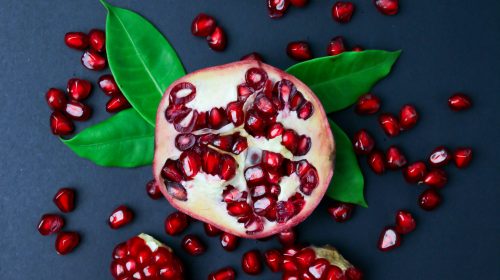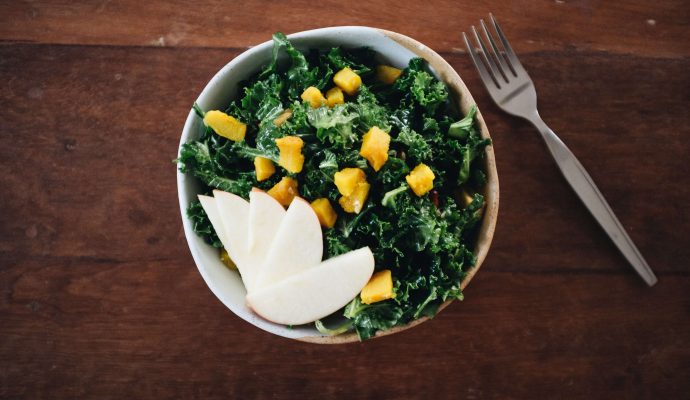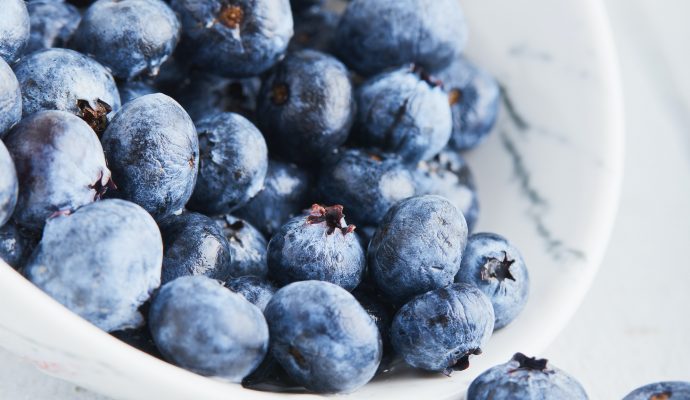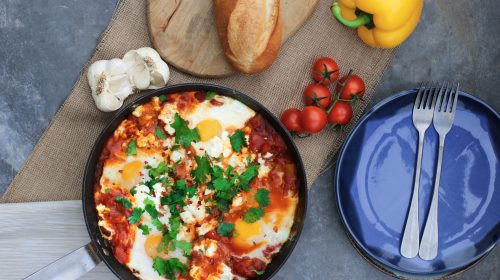Why not eating could help you live longer
As a Nutritional Therapist, of course I’d say that what you eat really matters, right? But, as science into this area explodes, we’re realising that NOT eating is almost as important what we do eat. Why? Because by not eating, you trigger a magical process in the body called autophagy. It’s the genius clean-up function Mother Nature has given us. Let me tell you a little bit more about this process and why it matters so much. And then you can see whether or not you’d like to learn how to trigger this extraordinary process in your body yourself.
Why the cells in your body need a clean-up
Small as they may be our body’s cells are tiny hubs of activity, and just like in our own world, industry creates waste. Each cell contains a nucleus, where the genetic material is stored, and various organelles – tiny “organs” that have a job to do.
But things wear out: mitochondria – the cells’ “batteries” – get old and malfunction, other organelles and parts of the cell break down. All that rubbish cannot be left floating around, so there are organelles for waste collection, too: phagophores. These are the bin men of the cell world, collecting all the bits and pieces that no longer work, even mopping up invading microbes, such as bacteria and viruses as they go.
They then take the junk to the lysosomes – the dump – a little bubble inside the cell where enzymes break down the waste, recycling what they can. A lot of this rubbish is made of proteins. Simply put, proteins consist of chains of amino acids. When an old protein is broken down into its components, those components – amino acids – can be recycled to make new proteins, or they can be used as extra fuel for the mitochondria. In times of famine, this process can even provide nutrients missing from the diet. It is called AUTOPHAGY, or “self-eating” and it is a very clever process.
Side-effects of a good clean-up
In addition to providing energy, scientists now think that autophagy may offer some protection against brain diseases, such as Alzheimer’s and Parkinson’s. Nerve cells are particularly active. Their mitochondria have to work especially hard and as a result break down sooner. Autophagy mops them up before they can do too much harm. Indeed, researchers believe that damaged mitochondria that have lost their ability to use fuels – fat and glucose – efficiently may be behind a whole range of illnesses. These include infections, cancer, neurodegeneration, aging, and heart disease.
Autophagy does a great job of keeping everything functioning at peak levels. Clearly, you’ll want autophagy to work properly in your own body.
Is your clean-up switch on or off?
Many processes in the body oppose each other, and there are feedback mechanisms that make them work. Think of this as a bit like a light switch. When one process is happening, the other cannot.
The magical state of autophagy is opposed by the activity of mTOR, an enzyme required for growth that monitors the body’s fuel supplies closely. It plays a central role in physiology, metabolism, the aging process, and common diseases.
When you eat, and food is plentiful, mTOR is switched on and works in growth and repair mode.
If you’ve not eaten for a while and nutrients seem in short supply, it is switched off, and autophagy kicks in to clean up and extract fuels from the waste like I described earlier.
It’s not that one of these processes is good and the other bad. As humans, we need both. This genius system evolved to get us through lean times … the only issue is, that in the Western world, there are hardly any lean times anymore.
When there is always plenty of fuel (the food you eat), mTOR is working overtime and autophagy hardly gets a chance to kick in. No surprise then, that waste builds up, and you become vulnerable to illness.
Autophagy only works when you are not eating (and have not eaten for a little while), and this is the reason why fasting is so good for you.
How to get yourself into autophagy
The easiest way to make it work is to eat less or stop eating altogether – to fast or to trick your body into thinking that you are fasting.
You can do this by switching to a very low-carb, high-fat diet – the ketogenic diet – where carbohydrate supply drops, starving the body of fuel and triggering autophagy.
Another option is actual fasting. Don’t worry, that doesn’t mean that you need to stop eating for a week. Just hours – it’s called intermittent fasting – are enough to trigger autophagy.
The best-known method of intermittent fasting is probably the “5:2 Diet”, made popular by TV doctor Michael Mosley a few years ago. It involves eating just 600 calories on two days a week while eating normally on the other five days (although, in later books, he upped the calorie allowance to 800).
Another way of intermittent fasting is time-restricted eating, in which you stop eating for a varying number of hours within a 24-hour period, aka 16:8 (eating only within an 8-hour window each day) or 14:10 (10-hour window).
In a 16:8 scenario, for example, you would have a late breakfast at 11am and stop eating after an early dinner, thus not eating anything from 7 pm to 11 am the next morning. In practice, this will feel like simply skipping breakfast.
Or, if for you, breakfast is the most important meal, you start and stop early. You would have a good breakfast and stop eating earlier in the afternoon. Studies found that not eating in the evening led to better weight loss results.
Why I love intermittent fasting
A lot of research has been and is being done on intermittent fasting, and the results are amazing. Not only does it promote weight loss – which is, let’s face it, what many of us secretly want more than anything else – but it has also been found to normalise blood sugar levels, reduce blood pressure and total cholesterol. At the same time, those who were well to begin with remained so. Their blood pressure, cholesterol and weight stayed the same.
Foods that trigger autophagy
But the ketogenic diet and fasting are not all that you can do to promote autophagy. It has been discovered that there are certain foods and nutrients that also trigger it.
Good news for coffee drinkers: coffee is one of them. Another is C8 oil. This is an “MCT” oil “medium-chain triglycerides”, a type of fat that occurs naturally in coconut oil, for example. As it is often used in the ketogenic diet, you can now buy it in health food shops and online.
Other foods that contain nutrients to promote autophagy are seeds, fish and shellfish, olives and olive oil, brassica (plants from the cabbage family, such as cauliflower, Brussels sprouts, kale and broccoli), mushrooms, blackcurrants, berries, turmeric, ginger, green tea, hibiscus, mint and bergamot (in Earl Grey tea).
Foods that block autophagy
On the other hand, there are foods that block autophagy, such as excess carbohydrates and excess protein, the latter especially from meat and dairy. Resistance exercise or strength training, too, blocks autophagy.
Adding the right exercise
It is important, if you are going to promote autophagy, not to forget to exercise. Remember, when you scale down your carbohydrate intake or restrict calories, mTOR, the protein for growth – including muscle growth – is switched off. When the body’s fuel supply is cut off, this is perceived as famine and – with the help of autophagy – proteins from muscle can be broken down to serve as fuel. Regular resistance exercise briefly switches autophagy off and mTOR back on and that way helps to protect your muscles.
Conclusion
So, for better health, maybe give your body a break from eating now and then. Try out intermittent fasting and see which version works best for you. I have found that many clients who first come to me think that they have been doing intermittent fasting, but actually they haven’t, because some aspects of it can be confusing for people ie either they don’t really understand the timing correctly, or aren’t aware that certain foods and drinks can stop the fasting process.
When you do eat, stick with real food as that gives you the best chance of stocking up on those vital nutrients that help autophagy work better.
If you would like to learn more or try out fasting with some professional guidance, please feel free to contact me for a complimentary 30-minute call. I’d love to speak to you!
 This delicious recipe uses flavours from Thailand, in whose cuisine coconut, ginger, and lime can often be found. Coconut milk helps increase the bioavailability of kale’s fat-soluble vitamins, while coconut’s sweetness and the brightness of the lime help eliminate kale’s natural bitterness. You could also use oat cream instead of coconut milk.
This delicious recipe uses flavours from Thailand, in whose cuisine coconut, ginger, and lime can often be found. Coconut milk helps increase the bioavailability of kale’s fat-soluble vitamins, while coconut’s sweetness and the brightness of the lime help eliminate kale’s natural bitterness. You could also use oat cream instead of coconut milk.






